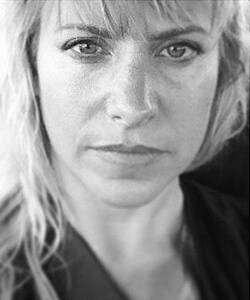NFB Hothouse 11: ‘Him’ (Lorna Kirk)
 This week on Skwigly we’re delighted to meet the participants of the National Film Board of Canada‘s 11th Hothouse apprenticeship scheme for emerging Canadian animators.
This week on Skwigly we’re delighted to meet the participants of the National Film Board of Canada‘s 11th Hothouse apprenticeship scheme for emerging Canadian animators.
Lorna Kirk completed her MA in Visual Anthropology in 1999 at the University of Manchester and ever since has solely directed children’s television and what she describes as “’standard’ broadcast TV documentaries”. Prior to her involvement in Hothouse 11 her film work includes the award-winning A Little Bit of Freedom.
On the production of Him:
I have always struggled with the rules of broadcast TV and the limits imposed on storytelling and creativity. The need to conform to these industry conventions in order to make a living has forced me to move away from my background in art and theatre.
My application for Hothouse 11 was a gamble. I hadn’t picked up a piece of charcoal in over 25 years. My interest in drawing hadn’t seemed relevant to my documentary work. Prior to Hothouse I had no formal training in animation and I was keen to learn. I was excited about the possibilities the internship could offer. Once I got into the program, the learning curve was steep and intense. I had never used After Effects and had only ever created one animated sequence. I was a true beginner. The first time I drew a walk cycle I was hooked. The power of bringing charcoal drawings to life was addictive. The long days I spent drawing a lonely boy wandering a war-torn city were not only physically demanding but emotionally draining as well. The research I needed to create Him forced me to come face to face with heartbreaking images month after month. It was a visceral experience. There were many times I had to stop drawing. I realized that working with charcoal and paper could evoke a strong emotional response.
Working within the constraints of the Hothouse FoundSound template, my intent was to explore the powerlessness of the refugee experience. My intent with Him was to juxtapose the tonal banality of a simple audio language lesson on giving directions with the frenetic visual story of a young refugee’s perilous search for safety. The sequences of the hand-drawn charcoal drawings enabled me to bring to life a boy that represents the millions of people displaced by war or conflict. As individual sketches, they seemed easy to draw, but the impact of creating animation sequences brought the boy to life and had an impact on everything I did after that. Ideally, I would like to draw everything. As soon as I had to work digitally on a sketch, I felt that I disengaged from the process.
On the benefits of Hothouse:
My Hothouse experience has inevitably changed the way I will tell stories in the future. I am extremely excited to continue to incorporate charcoal drawings into my films in order to break away from the conventions of traditional documentary filmmaking. Hothouse gave me the opportunity to grow and learn with other talented individuals who share my commitment to innovative storytelling.
What next?
This support and my passion and work on this project have catapulted me towards my first documentary feature, which will incorporate charcoal drawings throughout. While working on Him I was delighted to learn I had received a grant from the Canada Council, which will allow me to make this film.
Keep your eyes on Skwigly over the coming days to hear more from the Hothouse 11 participants.

